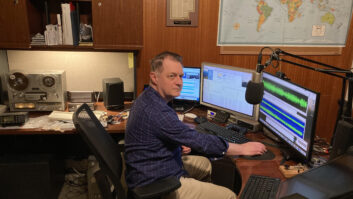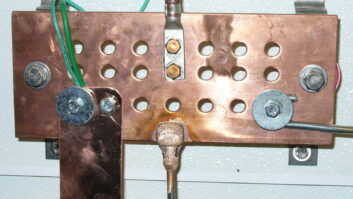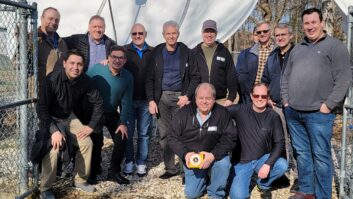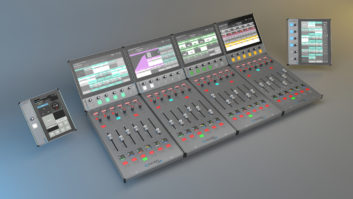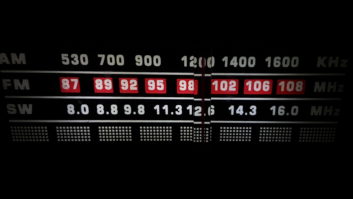SAN FRANCISCO Although the annual AES convention features broadcast-centric panels, workshops and events, its scope reflects the broader pro audio universe, incorporating recording, live sound, post-production, sound design, acoustics, theory and research. This makes for a unique experience that is part trade show, part academic symposium and part music festival.
The intersection of disparate disciplines makes AES a valuable opportunity for engineers to spot trends that will influence changes in broadcast technology in the years to come, especially in the areas of audio production and facility design.
This fall, three trends emerged from the presentations, panel discussions and products on the exhibit floor and in sessions.
Audio network approach
The first of these trends is the rise of the audio network concept as a unifying approach to digital audio interconnection.
Whether applied to centralized audio distribution systems, large sound reinforcement systems, connection of geographically separated audio facilities over long distances or a multi-room production environment, the ideal of networked audio is an attractive proposition. High-quality multichannel audio with significantly simplified wiring, complete routing flexibility, distributed control and scalable redundancy — what’s not to like?
These advantages have led to the introduction of a variety of network-style broadcast consoles, routers and interconnection systems over several years, and similar developments have been occurring in the other sectors of pro audio. Digital snakes, multichannel remote-controlled mic preamps, standalone control surfaces and networkable audio streaming devices were scattered around the AES show floor.
It seems the debate among engineers has shifted from whether audio should be networked to how audio best can be networked. A corollary of this is the implicit assumption that all audio is digital; analog audio devices cannot be networked. However, the cost of quality A/D and D/A network devices for analog sources and monitoring continues to drop, making the consideration of an audio network architecture a possibility for even small operations.
Software vs. hardware
The second trend to watch is the growth in sophistication of service-oriented software applications and a shift in the traditional importance of software and hardware platforms. This is perhaps best illustrated by the emergence of the audio software plug-in as a standalone product.
Plug-ins originated as a way for digital audio workstation makers to extend the signal processing capabilities of their systems while allowing marketing flexibility in offering a range of products at different price points. However, this meant that plug-ins were generally only offered for a limited number of specific DAWs, required dedicated DSP hardware and often were limited to a few basic processing functions or were “clones” of common hardware-based processors. Some platforms had some success in attracting plug-in developers, while others languished.
In the last five years, several factors have allowed these relatively basic add-ons to grow into powerful, essential applications in their own right: the rise of more powerful computer processors, reducing the need for specialized DSP hardware, the adoption of open standard plug-in formats by DAW developers, and the significantly lower cost of developing a software plug-in as compared to a hardware product.
As a result, there are thousands of plug-ins available, and dozens of new ones were exhibited at AES. They range from simple, quick-and-dirty compressor/limiters to lovingly rendered reproductions of classic processors, sample players and physical modeling synthesizers. What they have in common is that they do one thing well, and they take up few resources until asked to perform their function.
Ironically, a DAW is no longer required to use the plug-ins; many standalone hosts are available that serve only as plug-in players. In effect, the platform has become of secondary importance; the capabilities of the tool are what matters.
This is an illustrative example for broadcast facility designers, who have traditionally employed a hardware-centered approach. Identifying the most appropriate task-specific tools, regardless of platform, for functional workflows within a new facility early in a design program may lead in surprising directions, especially when the requirements for robust metadata creation and management are considered.
Computer, audio convergence
The third trend to become clear at AES is the importance of computer technology standards in enabling new types of audio-specific hardware. This is in some ways a natural outgrowth of the centrality of DAWs in the audio production process over the past 15 years, but is more directly a result of the convergence view of audio as a form of multimedia along with specific developments in technology.
In particular, the FireWire and USB interfaces and flash memory technologies, coupled with the creation of new markets built around the popularity of MP3 audio, the iPod and podcasting, have created entirely new classes of audio devices. Keyboards, analog mixers and microphones now can plug directly into a computer, rather than connecting through an audio or MIDI interface. Hardware controllers for DAWs and other audio applications are plentiful and inexpensive, where once they were rare and dear.
In portable recorders alone, the choices have exploded in the last two years, with more than a dozen models of flash memory recorders now available with street prices ranging from $300 to $2,000. For broadcast engineers faced with the slow decline of the MiniDisc format and the virtual disappearance of portable DAT machines from the marketplace, this couldn’t have come at a better time.
But if AES is any indication, even more choices are coming. As a prime example of this, Korg announced a new portable field recorder at the show capable of recording up to 24-bit/192 kHz linear digital audio or audiophile-quality 1-bit, 2.8 MHz direct stream digital audio to its internal 20 GB hard drive, all in an iPod-sized package.
These three trends indicate that the long-awaited promise of convergence between audio and computer technologies may finally be taking shape: A network architecture for distribution of audio and control, the primacy of software functionality in system design and the use of standardized technology to build new audio devices. What new directions will next year’s convention reveal?
For more on the 121st Audio Engineering Society Convention held in October, go to www.aes.org.





